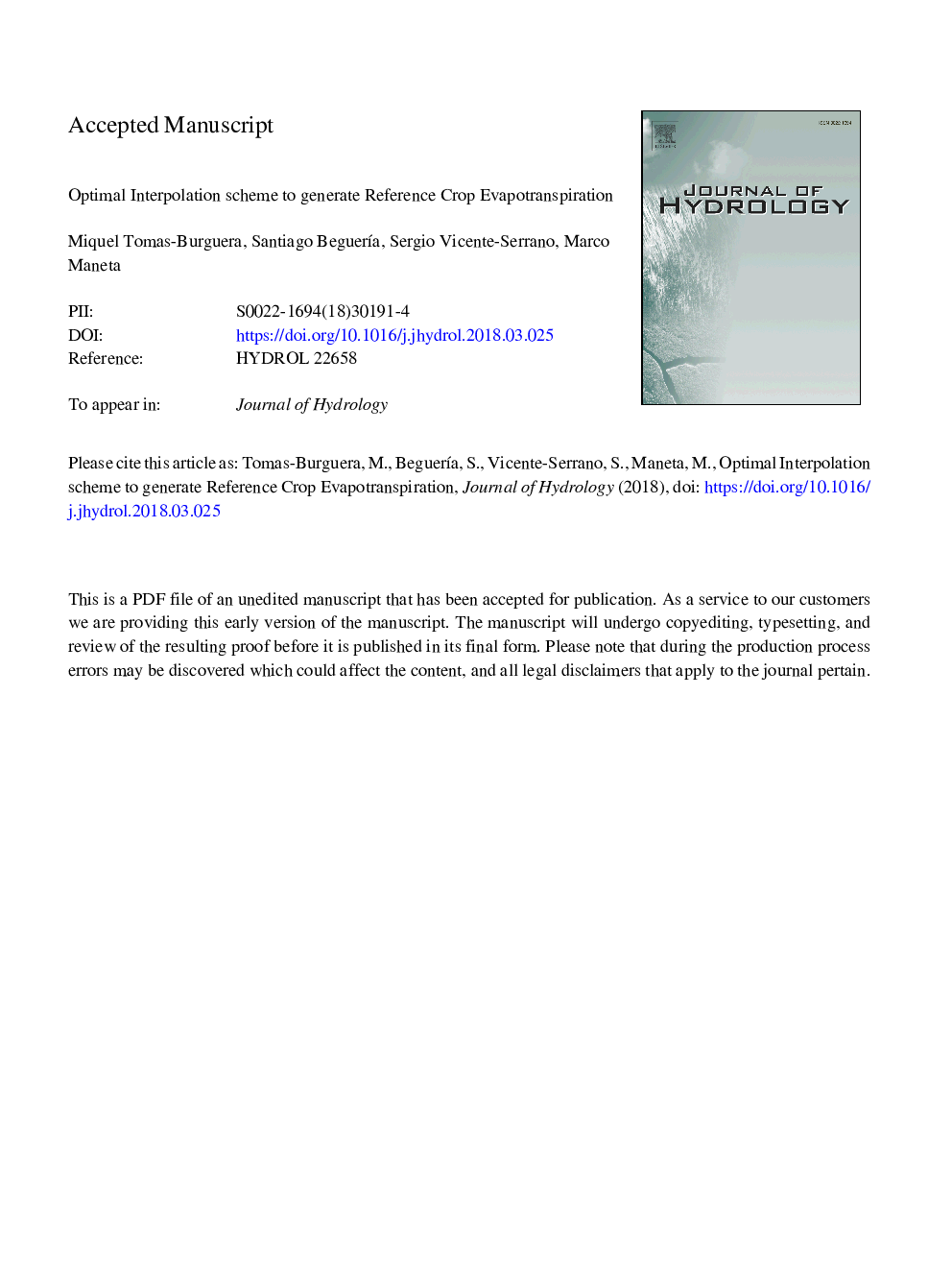| Article ID | Journal | Published Year | Pages | File Type |
|---|---|---|---|---|
| 8894762 | Journal of Hydrology | 2018 | 51 Pages |
Abstract
We used an Optimal Interpolation (OI) scheme to generate a reference crop evapotranspiration (ETo) grid, forcing meteorological variables, and their respective error variance in the Iberian Peninsula for the period 1989-2011. To perform the OI we used observational data from the Spanish Meteorological Agency (AEMET) and outputs from a physically-based climate model. To compute ETo we used five OI schemes to generate grids for the five observed climate variables necessary to compute ETo using the FAO-recommended form of the Penman-Monteith equation (FAO-PM). The granularity of the resulting grids are less sensitive to variations in the density and distribution of the observational network than those generated by other interpolation methods. This is because our implementation of the OI method uses a physically-based climate model as prior background information about the spatial distribution of the climatic variables, which is critical for under-observed regions. This provides temporal consistency in the spatial variability of the climatic fields. We also show that increases in the density and improvements in the distribution of the observational network reduces substantially the uncertainty of the climatic and ETo estimates. Finally, a sensitivity analysis of observational uncertainties and network densification suggests the existence of a trade-off between quantity and quality of observations.
Related Topics
Physical Sciences and Engineering
Earth and Planetary Sciences
Earth-Surface Processes
Authors
Miquel Tomas-Burguera, Santiago BeguerÃa, Sergio Vicente-Serrano, Marco Maneta,
